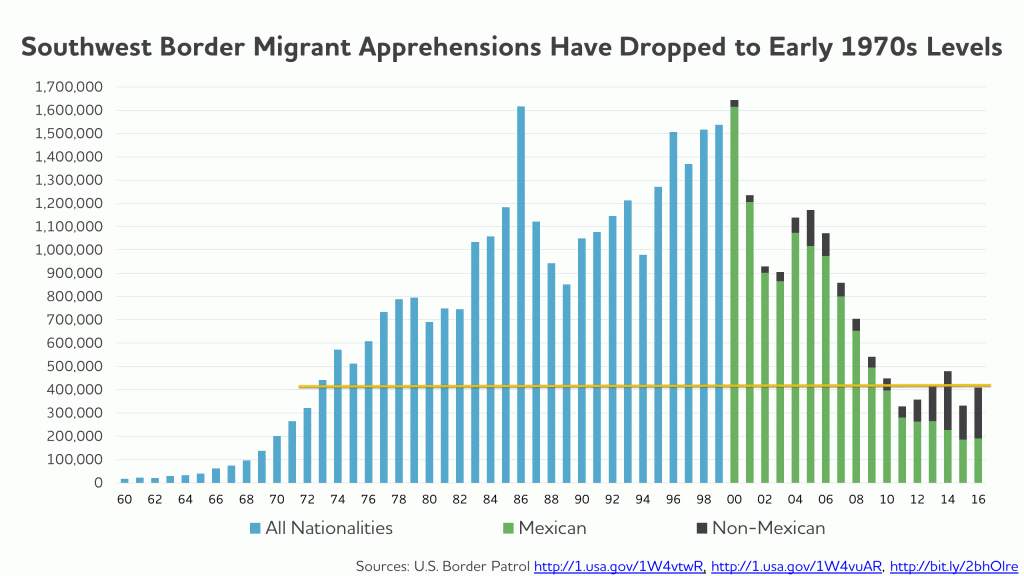The reality at the border shows no national security ‘crisis’
Washington, DC—In the context of the U.S. presidential campaign and federal elections, which have brought immigration, refugee, and border security policy to the forefront, WOLA (the Washington Office on Latin America) is releasing a new report today showing that, despite alarming rhetoric suggesting a national security crisis at the U.S.-Mexico border, there is no hard evidence to support this claim.
The report finds that, with 408,870 migrants apprehended at the U.S.-Mexico border in fiscal year (FY) 2016, undocumented migration has largely fallen over the last decade, dropping to levels not seen since the early 1970s.
“While overall border crossings have dropped from a decade ago, what we’ve seen is an important shift in who is coming,” affirmed Maureen Meyer, WOLA Senior Associate for Mexico and Migrant Rights. “Rather than just economic migrants, we are increasingly seeing families and unaccompanied minors who have fled violence in Central America, and who deserve the chance to seek international protection in the United States.”
In FY2016, over 53 percent of the apprehensions at the border were listed as “Other than Mexicans,” and were primarily Central Americans. Many of these families, women, and unaccompanied minors are fleeing violence in their home countries and could qualify as refugees in need of protection. Upon arriving at the U.S. border, rather than evading Border Patrol, many are turning themselves in and requesting asylum.
WOLA’s report also debunks claims that migration is fueling crime along the border. Not a National Security Crisis: The U.S.-Mexico Border and Humanitarian Concerns, Seen from El Paso reveals that violent crime rates in U.S. border communities remain among the lowest in the nation, contradicting claims of “spillover violence.” Of the 23 border cities included in the Federal Bureau of Investigation’s 2015 Crime in the United States report, only 3 had a homicide rate above the national average, each by no more than one percent.
Based on research and a field visit to El Paso, Texas and Ciudad Juárez, Mexico, the report emphasizes that building additional sections of fencing along the U.S.-Mexico border is not needed. The areas that have no wall are so remote that a wall would do little to deter crossers. A wall would fail to stop the flow of drugs, as the vast majority of illicit shipments are smuggled in through official points of entry.
“The reality of the U.S.-Mexico border is that there is no national security emergency there,” said Adam Isacson, WOLA Senior Associate for Defense Oversight. “Building hundreds of miles of additional fencing through empty wilderness areas would be an expensive and ineffective mistake. Additional funds would be better spent on increasing personnel at ports of entry, which we found to be understaffed and under-equipped.”
While radical policy shifts or dramatic security buildups are unnecessary, the report highlights serious—yet manageable—areas of concern. These include serious reports of abuses by Customs and Border Protection (CBP) agents at the official border crossings in the El Paso sector, including troubling incidents of excessive force, verbal abuse, humiliating searches, and intimidation by agents.
WOLA documents how, despite new agreements between the U.S. and Mexican governments which limit deportation practices that put migrants at risk and seek to return deported migrants’ belongings, these policies have not been fully implemented. The failure to return migrants’ belongings is particularly acute in El Paso. WOLA’s research also found Ciudad Juárez to have effective systems in place for receiving deported migrants from the United States, which could serve as a model for other Mexican border cities.
###

